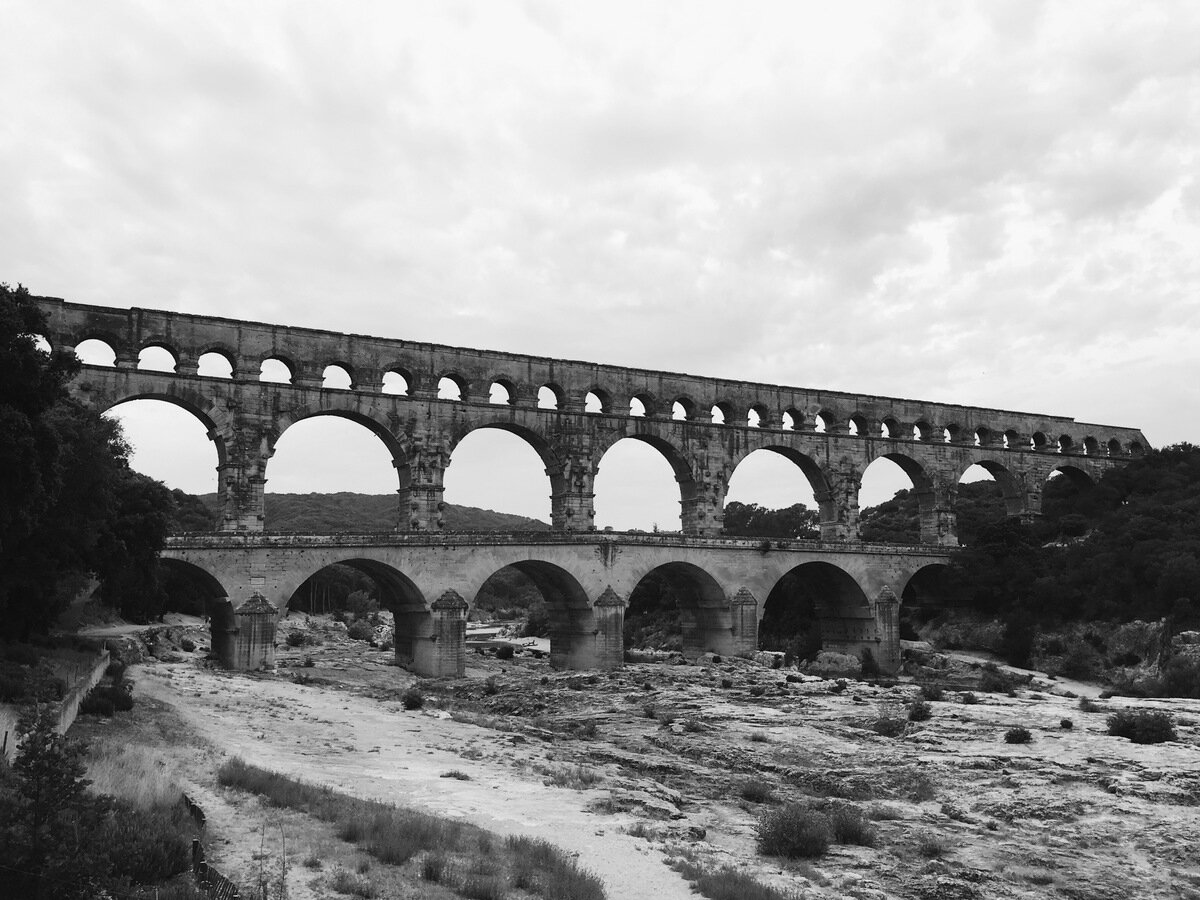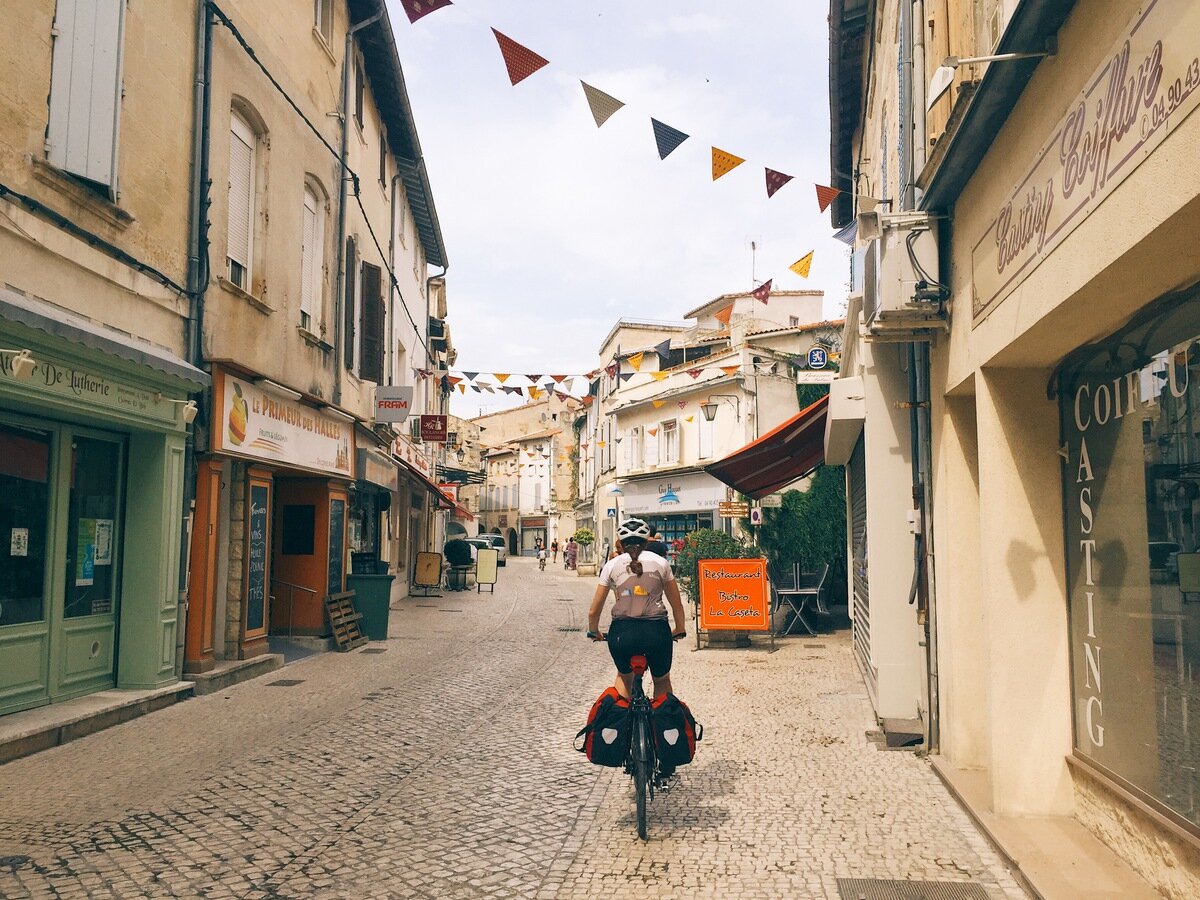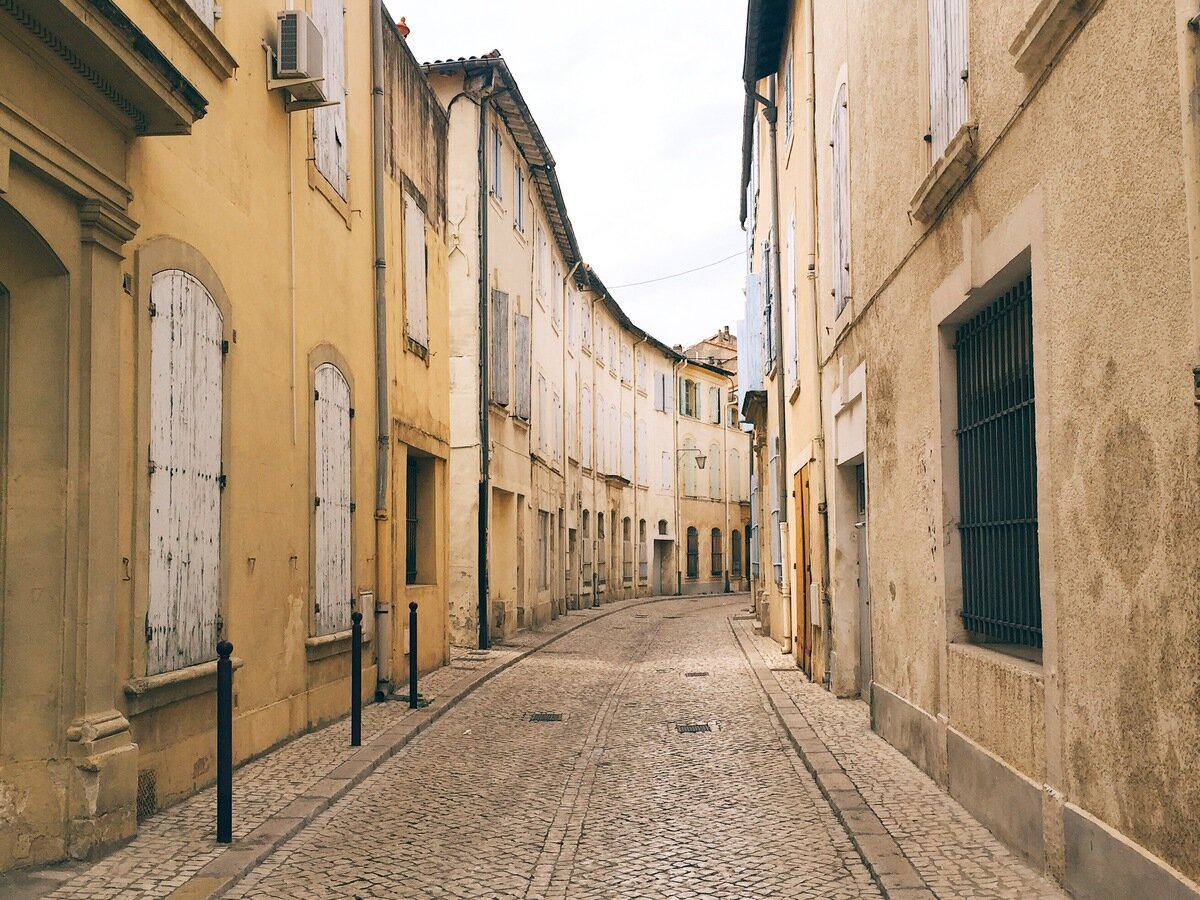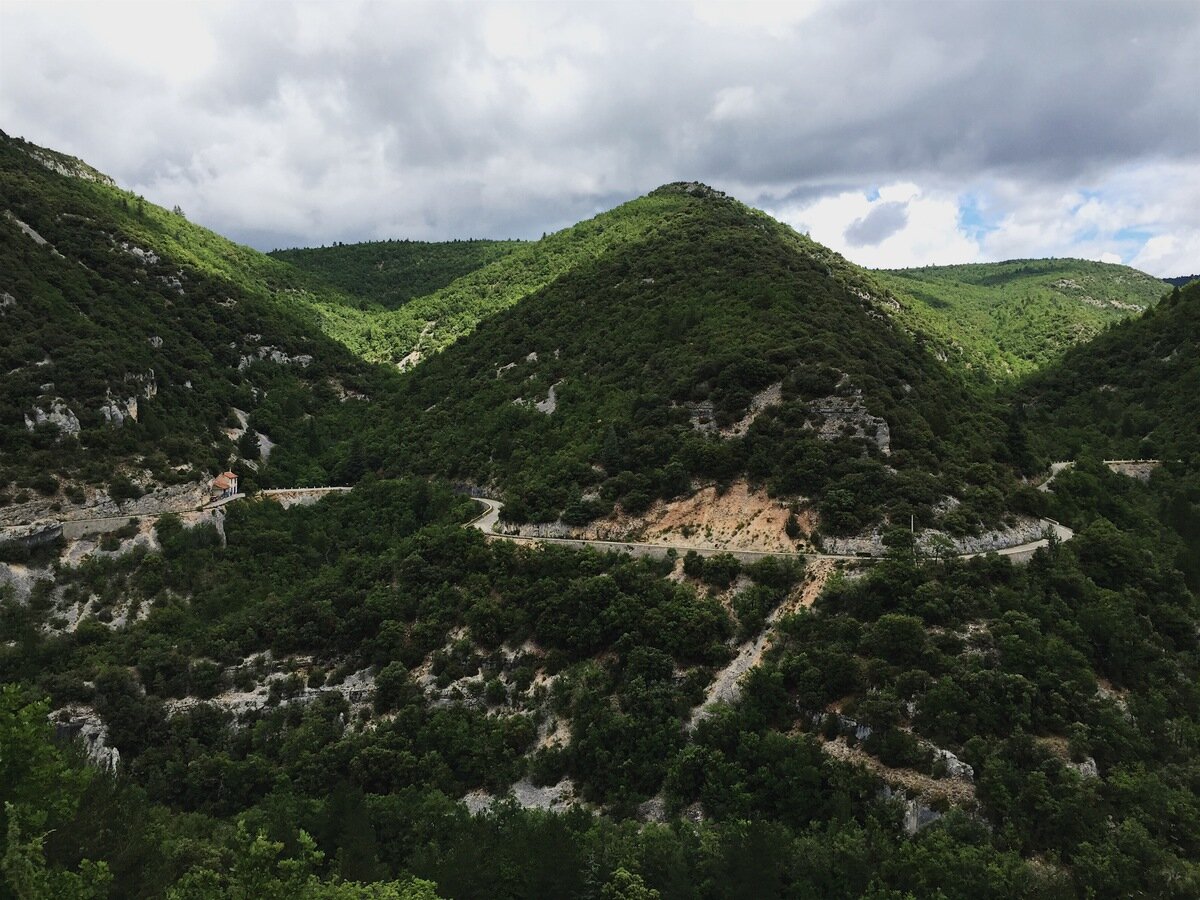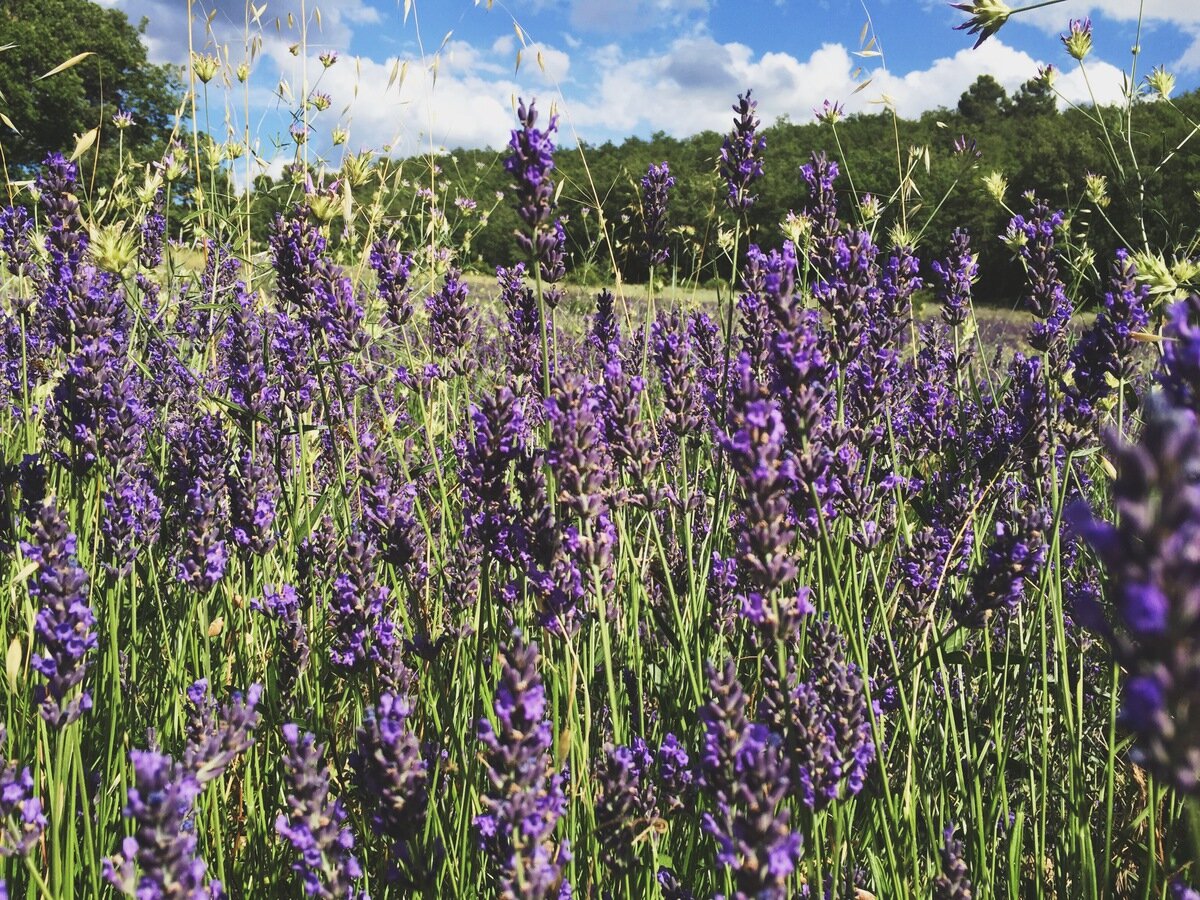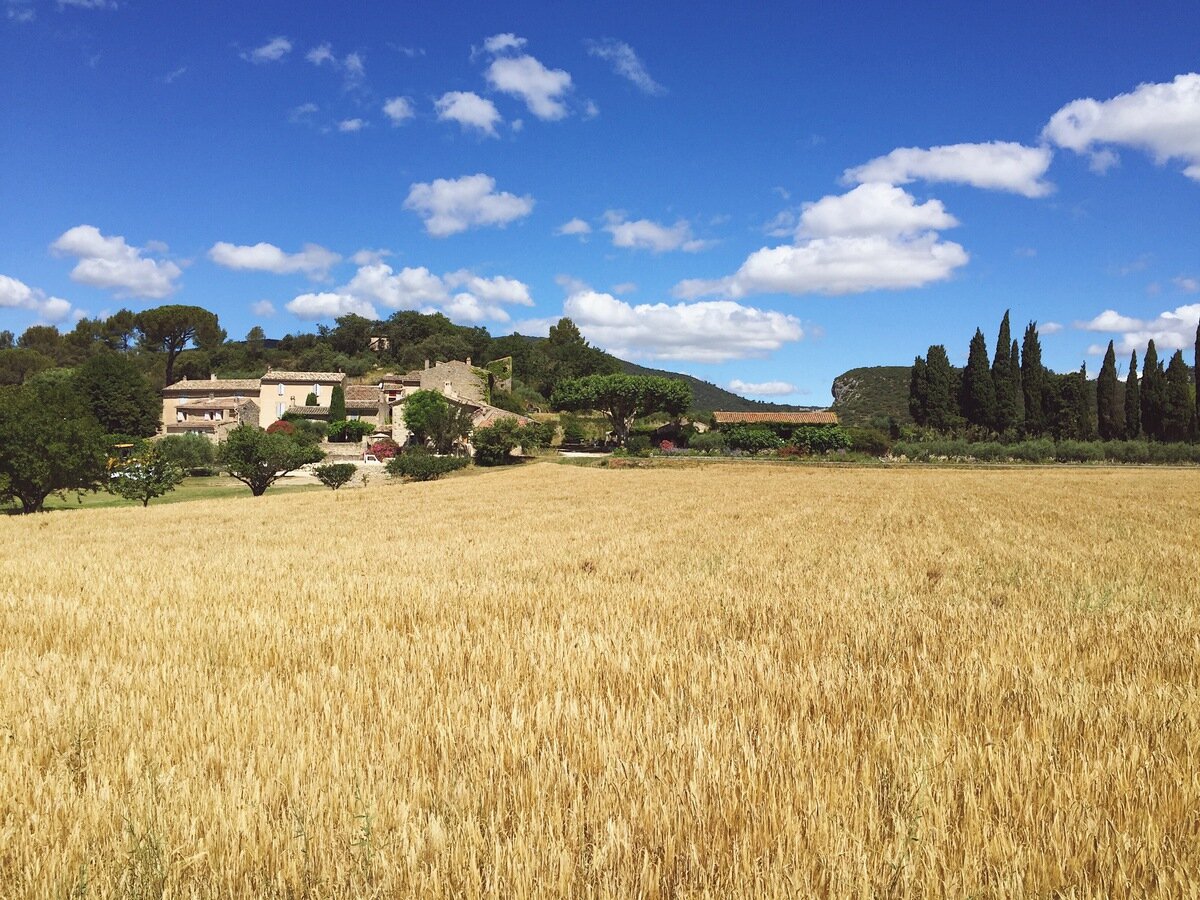Cycle touring in Provence
Tanya and I went on a wonderful summer holiday this year: we went cycle touring in France. We were initially indecisive about where to go. In the end it came down to a decision between possible extreme heat in Provence or possible snow in the alps, and we chose the warm weather. It took some complex juggling of train tickets to get us and our bikes a few hundred kilometers south, which reminded us that the Swiss system without reservations is wonderfully simple. But we got it sorted out, and after rolling downhill to Lausanne train station we travelled via Geneva and Lyon to the medieval city of Avignon.
Avignon is a charming walled city next to the Rhône. It was the home of the Papacy in the 1300s, and there is an enormous Papal palace built into the rock in the centre of the town. I found the palace impressive but cold and menacing, its high white walls too sheer; it was presumably designed to show power and supposed superiority. The palace had pretty gardens on one side, from which we could see over the river and caught a glimpse of the famous Pont d'Avignon, and the cycling-famous Mont Ventoux in the distance.
Here is a map of where we rode. You can click on the different parts to see distances and height gains if you're interested.
Day 1
Our first day of riding started warm and got hot. We first went to the Avignon tourist office to ask them the best way to ride to the nearby Pont du Gard — they didn't know, couldn't say really, didn't have any map that showed cycling routes. It was like we were the first cyclists to ever go to the tourist office in a major town in a major cycling region. Perhaps we were? If so, I hope the trend catches on and they get some cycling information. We set off towards Pont du Gard following Google Maps, which in short order directed us down a dirt road that gradually got smaller and rockier until it became impassable. Lesson learnt! We backtracked and, using a mixture of GPS and cunning, made it to Pont du Gard for lunch.
The Pont du Gard is a Roman aqueduct that has been there since 40-60 AD. The weather was warm and I tried to imagine the people who built it toiling under a similar hot sun. I wonder if they ever imagined it would still be there almost 2000 years later? The engineering of the Roman aqueducts is incredible. The gradients are ridiculously low so that the water is moved the furthest possible distance. This one was originally 50 km long and descended only 12.6 metres in that entire length.
We continued on busier roads to cross back over the Rhône to Tarascon, then on bike paths and up a last steepening to get to Les Baux de Provence. Les Baux is simply spectacular; set amongst limestone outcrops and on top of a hill, a ruined medieval castle on top. The road to the village was cut straight through solid rock. We wandered the town late in the evening when it was very quiet with almost nobody around.
Day 2
On our second day of riding we headed east in the sun, grabbed lunch in Eygalières, navigated a maze of highways and bridges to cross the Durance, and were happy to find a signposted cycle route that lead into the Luberon. The countryside opened up after Les Baux, to dry wine country and appealing rocky hills.
The cycle routes were great in that they were far from car traffic, but I am sure that whoever put the sign posts up had never actually ridden the route on a bike. Some turns were marked and others weren't, and they had the unfortunate habit of using a left-pointing arrow to mean "continue straight, passing to the left of the sign". We figured this out in the town of Coustellet, after dutifully taking four left hand turns and ending up where we started.
We crossed the Pont Julien, another Roman bridge that was built in 3 AD and has been in essentially continuous use ever since. We finished the day at Roussillon, where cicadas were singing loudly and the red ochre under the town glowed at sunset.
Day 3
Day three was our rest day, but we still rode a bit to keep to our schedule. We pushed through a rain shower to Gordes, which is very beautiful but not very friendly, then north into Lavender country. As we passed the Abbaye Notre Dame de Sénanque the skies really opened. We stood under trees in the abbey's car park, getting soaked despite the foliage, and waited for the storm to pass. A beautiful section of gorge took us out of the Luberon (for now) and we stopped at the cat-rich hilltop town of Venasque for a stormy night.
Day 4
The next day was clear and sunny with just a few clouds clinging to the hilltops. The air was fresh and cleaned by the rain. We set off north, wound through a few little towns and then climbed through the stunning Gorges de La Nesque. The road climbed steadily for about 18 kilometres before delivering us into the plains near Sault.
Sault seems to be a mecca for two things: lavender watching, and cycling up the famous Mt Ventoux. We combined cycling and lavender by riding a 30 km "lavender" loop in the afternoon, past rolling fields. I was struck by the lovely way the lavender fields change colour depending on the viewing angle — they go from slate grey to green to bright purple. Also on this section of the ride we passed through multiple swarms of bees who I guess were between lavender fields at the time. It turns out it's hard work to ride uphill with your mouth clamped shut to avoid accidentally scooping up bees. At various points I would yell "more bees!" to Tanya, who, ever watchful, had already noticed them and would reply with a muffled "mmhmm!!".
Day 5
We had train tickets back from Marseille and our original plan was to ride all the way there, but it quickly became clear that we didn't have the time. Tanya rang the SNCF with the idea of changing our tickets to leave from a nearer station, but every time the SNCF phone service passed through minutes of menus (on roaming charges) before announcing there were no operators available anyway and hanging up without further ado. So we decided instead to catch a train to Marseille, and on day five of our ride we headed south again.
We ended up at the tiny town of Bonnieux, which offered fantastic views across the plains to Roussillon and Gordes.
Day 6
Our last day of riding was an easy one; we rode downhill to Lourmarin and out to Pertuis, from where we could take a regional train to Marseille.
Once in Marseille we just had to get our bikes a few blocks over to a hotel — tricky riding in heavy traffic. The hotel kindly let us put our bikes into their seminar room for the night, and saved us the worry of leaving our bikes outside in a major city. We went walking through the Vieux Port at dusk.
The next morning we had a couple of hours before our train, so we walked up to the Basilique Notre-Dame de la Garde to take in the view of Marseille and the sea. It was a warm day and Marseille was gorgeous in the sun; it was with some regret that we headed to the train station, and our holiday came to a close as we hustled our bikes onto a TGV and sped back to Geneva.




